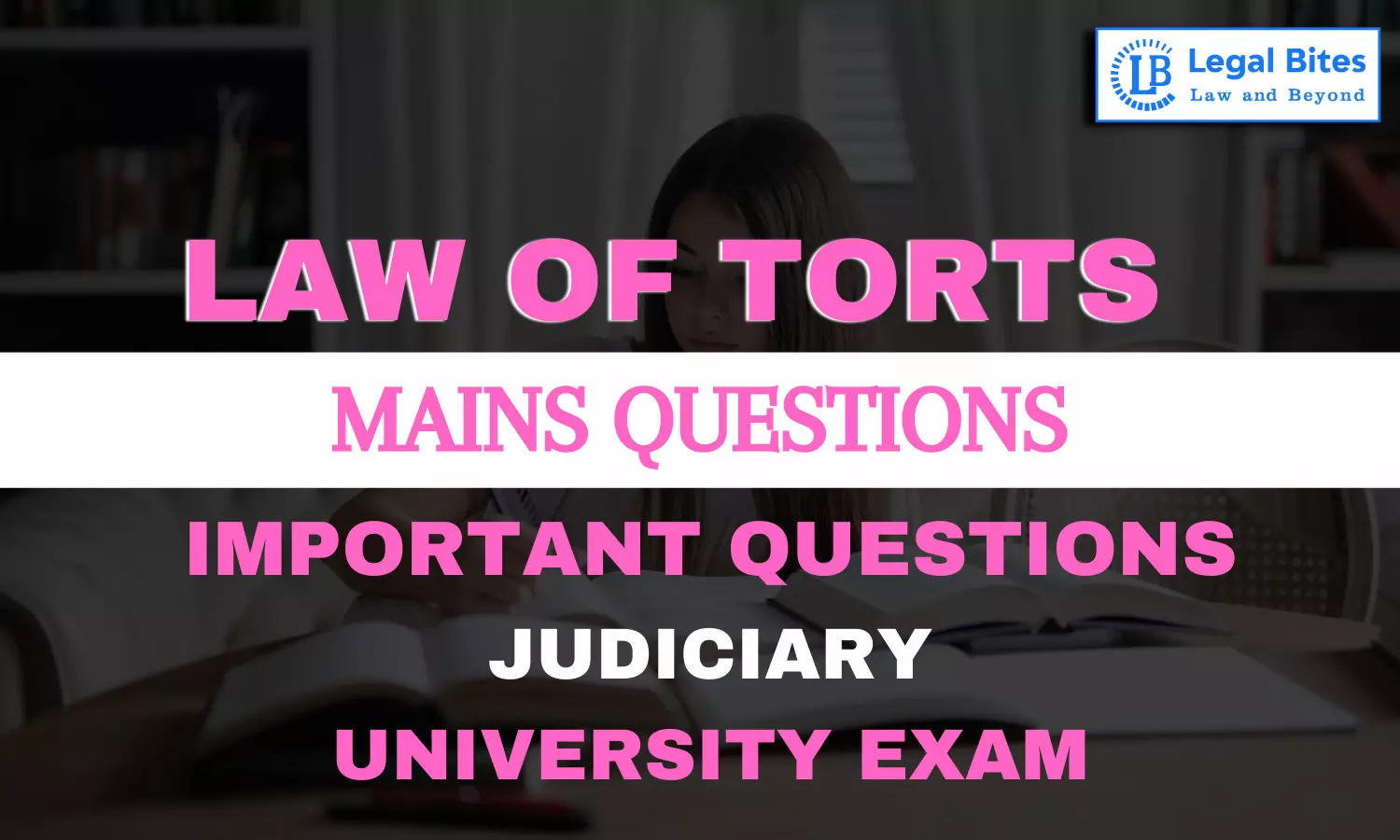"The rule in Rylands v. Fletcher is interpreted in the light of the Constitutional provision.....M.C. Mehta v. Union of India (1987).” Explain....
Find the question and answer of Law of Torts only on Legal Bites.

Question: "The rule in Rylands v. Fletcher is interpreted in the light of the Constitutional provision by the Supreme Court in M.C. Mehta v. Union of India (1987).” Explain the rule laid down in Rylands v. Fletcher. Keeping in mind the aforementioned statement, elaborate the corresponding development in India with reference to the said rule. [UPJS 2015]Find the question and answer of Law of Torts only on Legal Bites. ["The rule in Rylands v. Fletcher is interpreted in the light of...
Question: "The rule in Rylands v. Fletcher is interpreted in the light of the Constitutional provision by the Supreme Court in M.C. Mehta v. Union of India (1987).” Explain the rule laid down in Rylands v. Fletcher. Keeping in mind the aforementioned statement, elaborate the corresponding development in India with reference to the said rule. [UPJS 2015]
Find the question and answer of Law of Torts only on Legal Bites. ["The rule in Rylands v. Fletcher is interpreted in the light of the Constitutional provision by the Supreme Court in M.C. Mehta v. Union of India (1987).” Explain the rule laid down in Rylands v. Fletcher. Keeping in mind the aforementioned statement, elaborate the corresponding development in India with reference to the said rule.]
Answer
The rule laid down in Rylands v. Fletcher (1868) establishes a principle of strict liability for inherently dangerous activities. In this landmark English case, the court held that if a person brings onto their land something likely to cause harm if it escapes, they are strictly liable for any resulting damage. Specifically, the rule states that:
- If a person brings and keeps something on their land that is likely to cause mischief if it escapes, and
- It does escape and cause damage,
- The person is liable, regardless of whether they were at fault or negligent.
This rule, often described as “strict liability,” meant that liability would arise from the act itself, without needing to prove negligence or intent.
Development of the Rule in India: The Case of M.C. Mehta v. Union of India (1987)
In M.C. Mehta v. Union of India (1987), the Supreme Court of India expanded upon the strict liability principle from Rylands v. Fletcher and established a more stringent standard, known as "absolute liability." This case arose from the Bhopal gas tragedy, where a gas leak from a chemical plant caused significant harm to public health and the environment.
The Supreme Court held that industries engaging in hazardous or inherently dangerous activities bear "absolute liability" for any harm caused by such activities, regardless of any precautions taken. Unlike strict liability, absolute liability in India has the following characteristics:
No Exceptions: The absolute liability principle does not allow for any exceptions, unlike Rylands v. Fletcher, which permitted defenses like act of God or third-party intervention.
Enhanced Responsibility: Companies or entities engaging in hazardous activities owe a heightened duty of care to the public. This ensures that those profiting from such activities cannot evade liability for potential harm.
Constitutional Underpinning: The Supreme Court's interpretation aligns with the constitutional mandate under Article 21 (Right to Life) of the Indian Constitution, ensuring that the public’s right to a safe environment is safeguarded against industrial hazards.
Conclusion
The evolution from strict to absolute liability in M.C. Mehta signifies the judiciary's commitment to protecting fundamental rights, emphasizing that hazardous industries cannot escape liability by citing traditional defenses. This doctrine provides a robust legal framework in India for addressing industrial hazards, aligning with constitutional principles and ensuring greater protection for the public and the environment.

Mayank Shekhar
Mayank is an alumnus of the prestigious Faculty of Law, Delhi University. Under his leadership, Legal Bites has been researching and developing resources through blogging, educational resources, competitions, and seminars.
